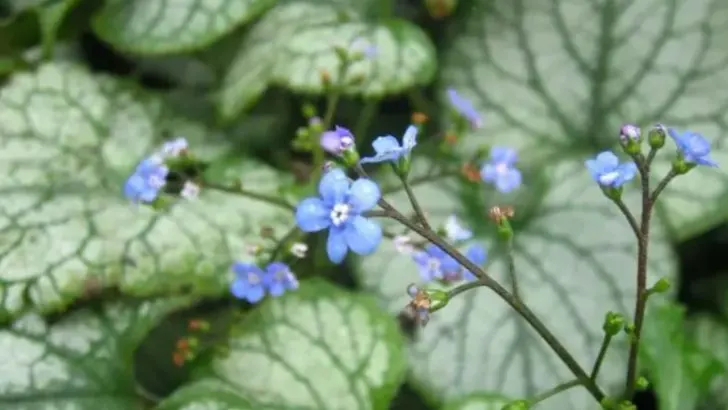Fruit trees are greedy. They hog the light, drink the water, and drop shade like they own the place. And honestly? They kind of do. But that doesn’t mean the ground beneath them has to stay bare and boring. There’s a whole cast of shade-loving companions ready to move in—quietly tough, wildly useful, and beautiful in their own right. They know how to play second fiddle without fading into the background. From groundcovers that lock in moisture to blooms that charm pollinators from the shadows, these ten picks thrive where the sun refuses to shine. Give them a chance, and they’ll turn that dry, dappled mess into something rich, alive, and wildly productive.
Hostas
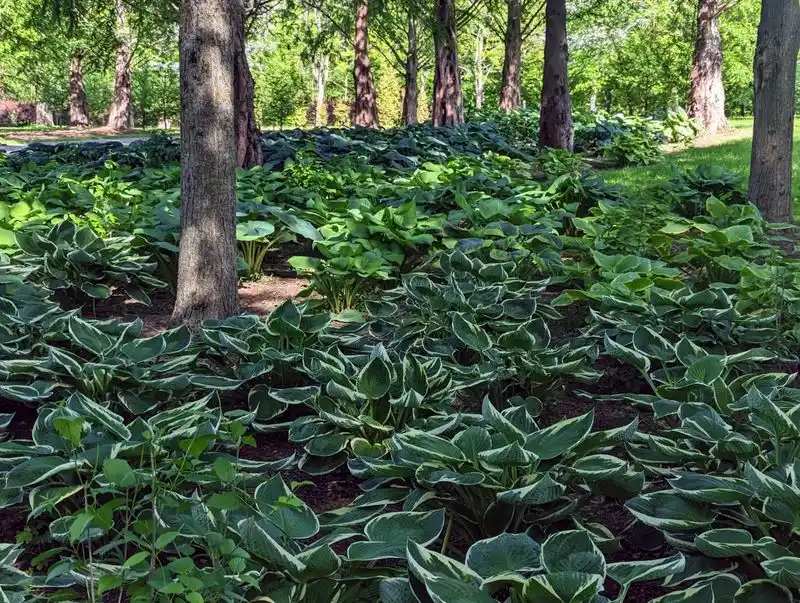
Hostas, with their broad, lush leaves, are a classic choice for shaded areas. They come in a myriad of colors and sizes, providing a rich tapestry of greenery. Hostas are hardy and require little maintenance, making them ideal for busy gardeners. Their leaves can range from deep blue-greens to vibrant yellows. During summer, hostas produce delicate, lavender flowers that add a splash of color. These perennials are perfect for creating a serene, peaceful garden atmosphere. Despite their tropical origins, hostas are incredibly adaptable and can thrive in a variety of climates.
Ferns
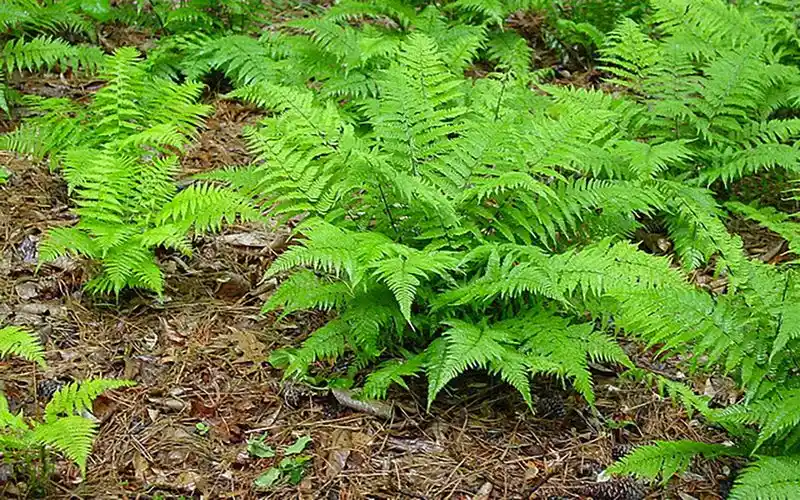
Ferns add a touch of prehistoric beauty to any garden. Their feathery fronds and vibrant green hues make them standout companions under fruit trees. These plants have been around for millions of years, adapting to thrive in low-light conditions. Ferns are relatively low-maintenance, needing just the right amount of moisture to flourish. They create a lush, verdant layer that complements the dappled shade of fruit trees. Perfect for adding texture and depth, ferns can transform a simple garden space into a tranquil oasis with their natural elegance and timeless appeal.
Wild Ginger
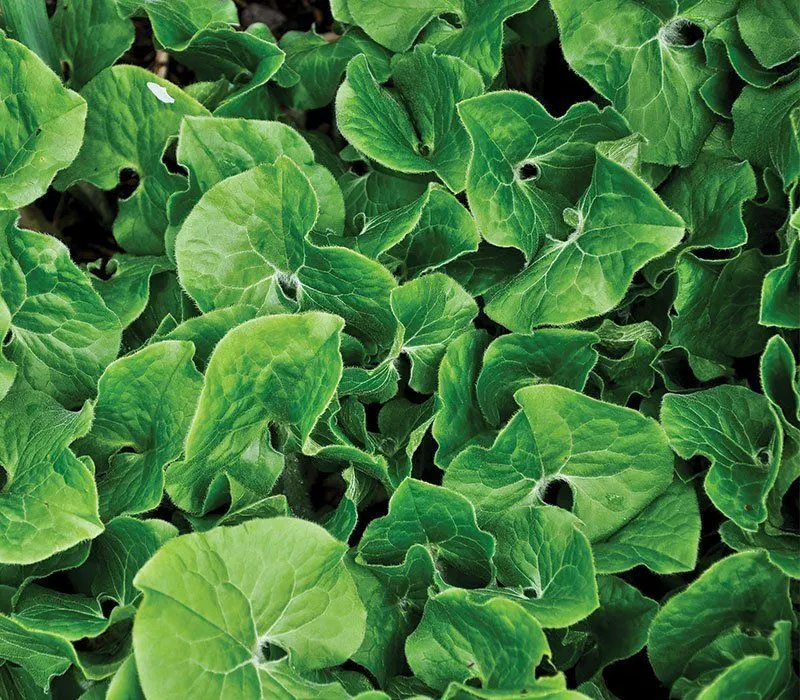
Wild ginger is known for its heart-shaped leaves and subtle, ground-hugging habit. It’s an excellent choice for a shady spot under fruit trees, providing a lush carpet of greenery. The plant’s unique, bell-shaped flowers often hide beneath its foliage, offering a delightful surprise for those who seek them out. Wild ginger is not only ornamental but also serves as a host plant for various butterflies. This perennial prefers rich, moist soil and once established, requires minimal care. Its aromatic rhizomes add a unique sensory experience to the garden.
Lungwort
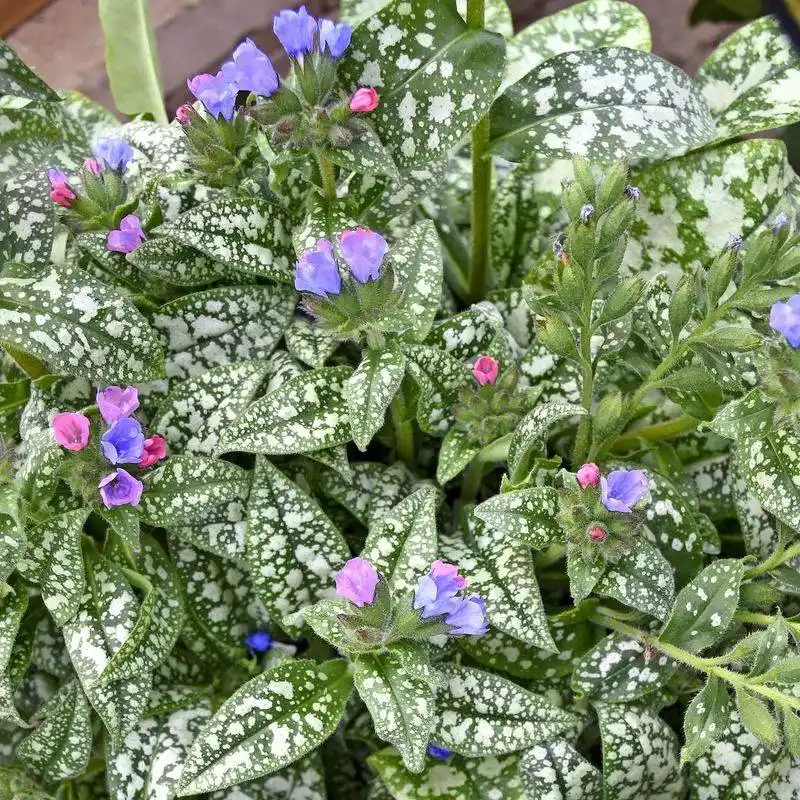
Lungwort may have an unusual name, but its beauty is undeniable. With speckled leaves and clusters of pink and blue flowers, it adds a whimsical touch to shaded areas. Lungwort thrives in the cool, moist environment found beneath fruit trees. This perennial is not only attractive but also beneficial, as it attracts pollinators, such as bees and butterflies. Lungwort’s unique appearance makes it a favorite among gardeners seeking something different. It’s a resilient plant that requires minimal attention and can brighten any shaded corner with its colorful blooms.
Solomon’s Seal
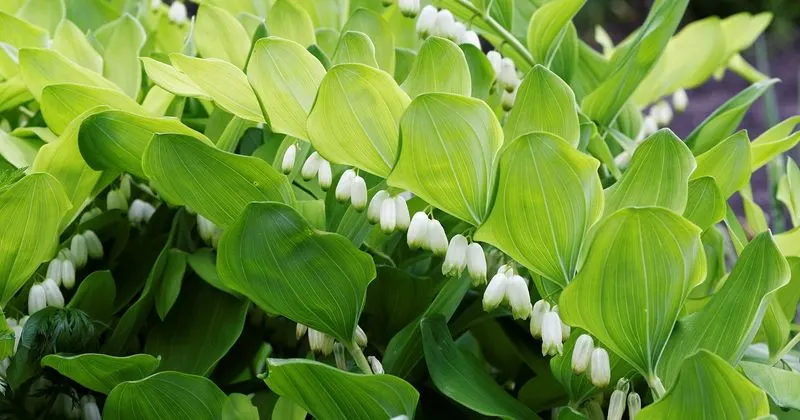
Solomon’s Seal is a graceful addition to any shaded garden. Its arching stems and bell-shaped, white flowers create an elegant display. This plant thrives in the rich, moist soils under fruit trees, adding a vertical dimension to the garden. Solomon’s Seal’s foliage turns a golden yellow in the fall, providing seasonal interest. It is relatively pest-free and requires little maintenance once established. This perennial is perfect for gardeners looking to add a touch of sophistication and timeless beauty to their shaded spaces.
Bleeding Heart
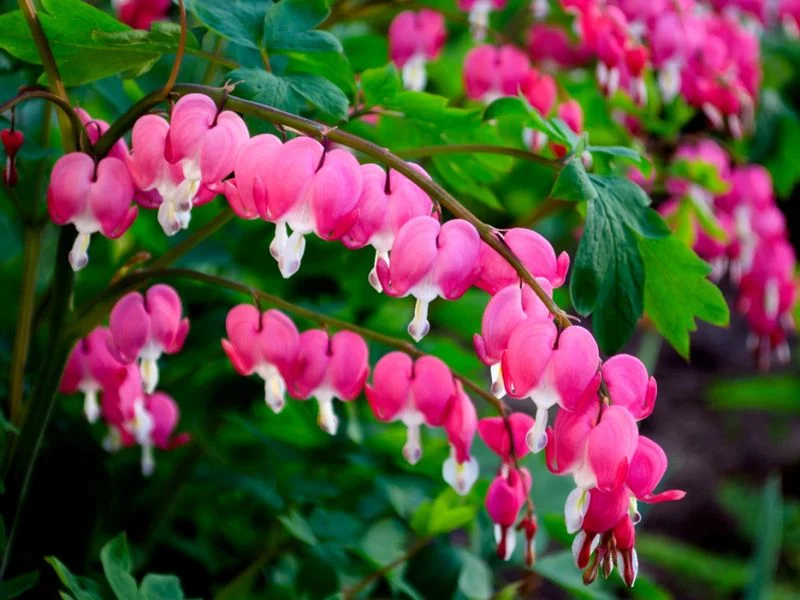
Bleeding Heart captivates with its uniquely shaped, pink flowers. The heart-shaped blooms dangle delicately from arching stems, creating a romantic atmosphere in shaded gardens. This plant thrives under the protective canopy of fruit trees, preferring the cool, moist conditions found there. Bleeding Heart is a springtime favorite, often one of the first to bloom. Its foliage is fern-like, adding another layer of texture to garden spaces. Though it may go dormant in summer heat, it reliably returns each spring, enchanting gardeners with its ephemeral beauty.
Coral Bells
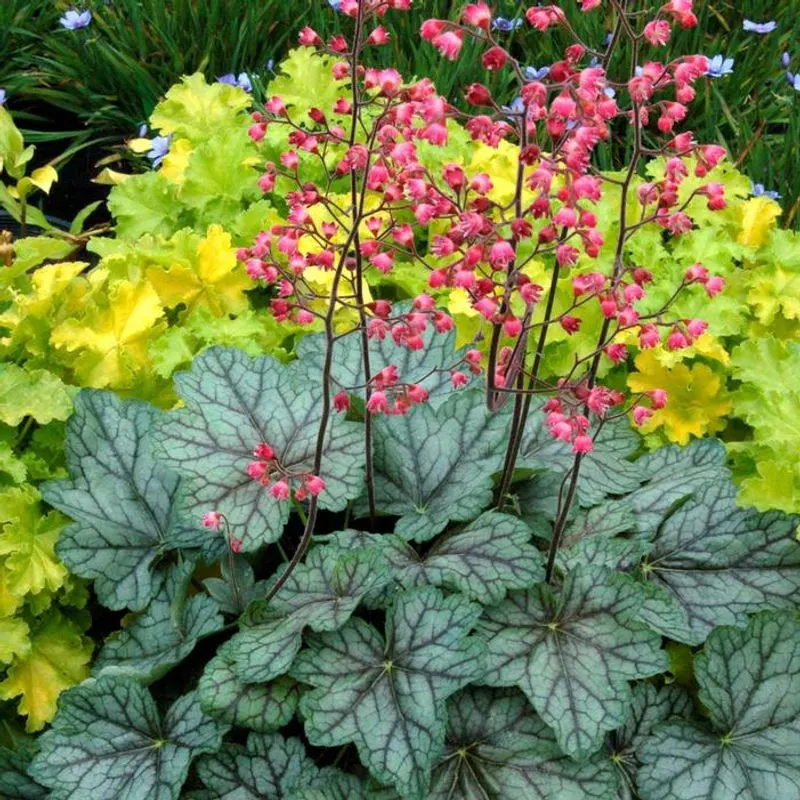
Coral Bells are celebrated for their vibrant foliage and dainty flowers. Their leaves come in a range of colors from deep purples to bright greens, providing a splash of color in shaded areas. These plants are versatile and can thrive under the canopy of fruit trees. Coral Bells produce tiny, bell-shaped flowers that rise above the foliage, attracting pollinators. They are relatively easy to care for and can withstand a variety of soil conditions. Coral Bells offer year-round interest, as their stunning leaves often persist through winter.
Astilbe
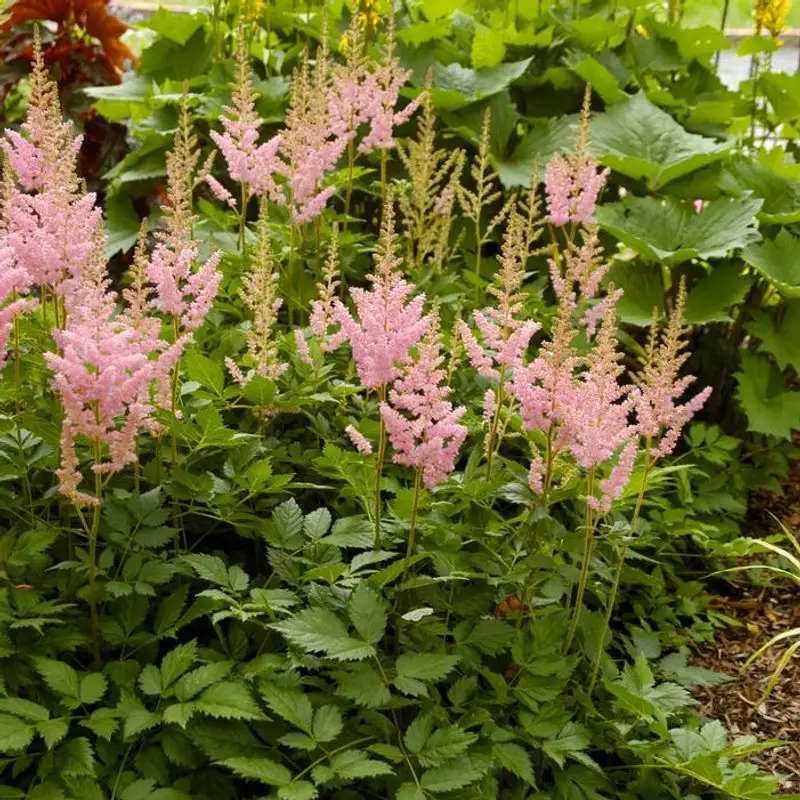
Astilbe is known for its feathery plumes of flowers that rise above the foliage, creating a dramatic effect. Available in various shades of pink, red, and white, Astilbe thrives in the moist, shaded environment under fruit trees. The plant’s fern-like leaves add texture and depth to garden spaces. Astilbe is a favorite among gardeners for its ability to attract butterflies and resist deer. It requires minimal maintenance and provides a long-lasting display of color from late spring to midsummer, brightening any shaded corner with its vibrant blooms.
Toad Lily
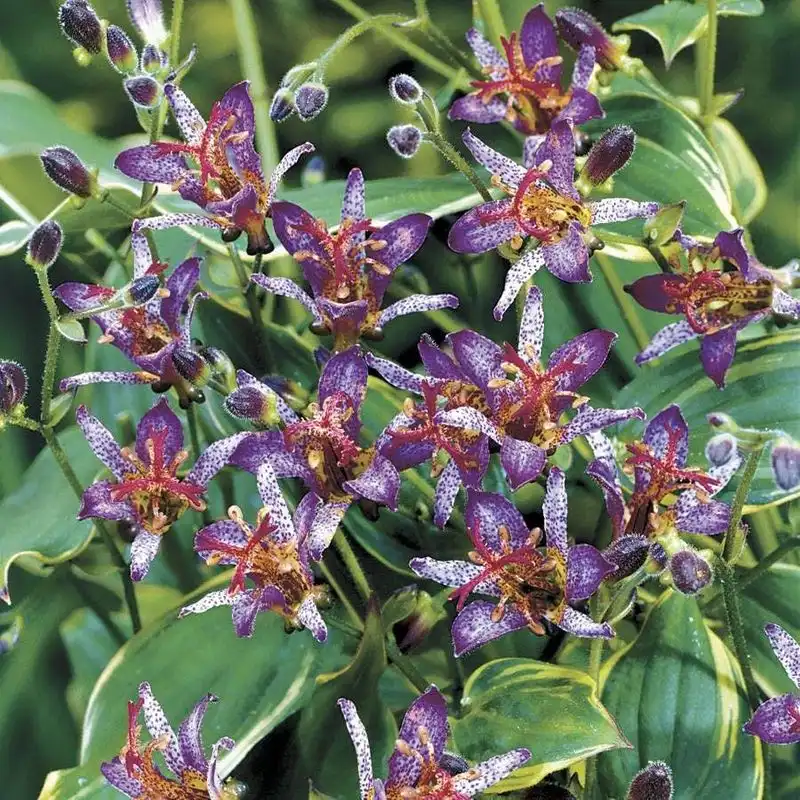
Toad Lily offers exotic charm with its orchid-like, speckled flowers. Often blooming in late summer to fall, it provides interest when many other plants have finished flowering. Toad Lily thrives under the dappled shade of fruit trees and is perfect for adding a touch of whimsy to the garden. Its arching stems and unique blooms are sure to catch the eye. Toad Lily prefers rich, moist soils and can be a delightful surprise for gardeners looking for something out of the ordinary. Its intricate flowers are a testament to nature’s artistry.
Brunnera
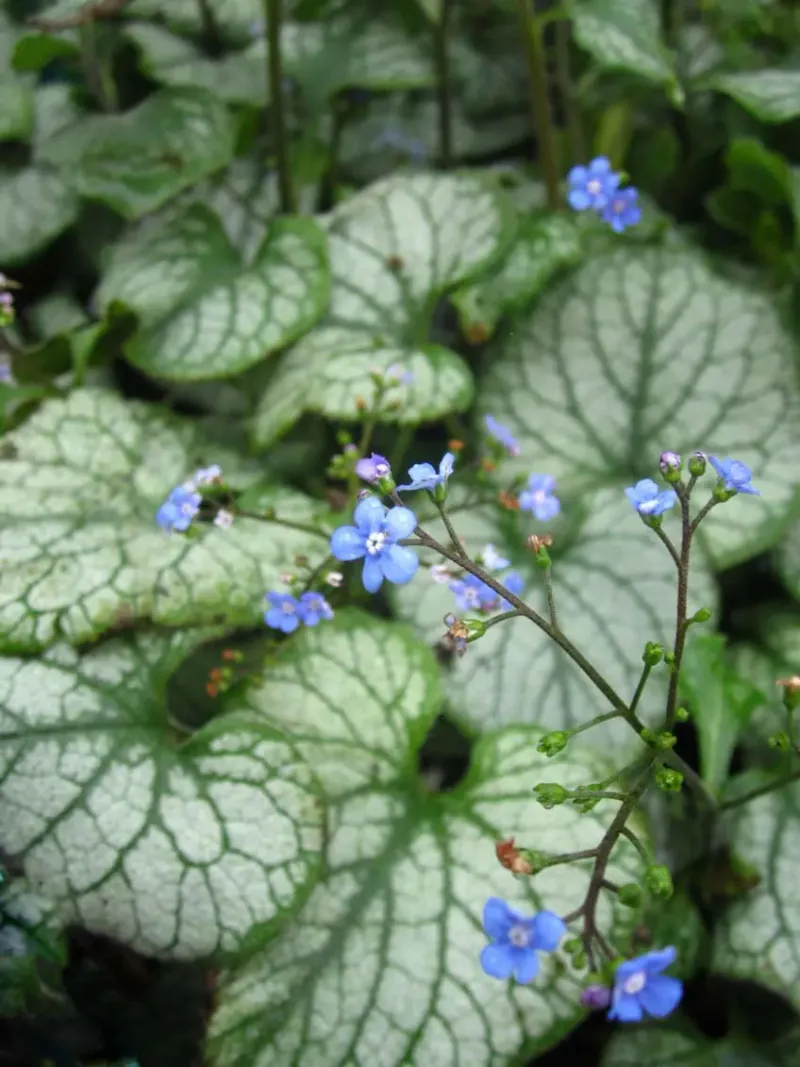
Brunnera, often called False Forget-Me-Not, charms with its tiny, sky-blue flowers and heart-shaped leaves. It’s a superb choice for shaded areas under fruit trees, where it can spread to form a lush ground cover. Brunnera’s leaves are often variegated, adding a hint of silver to the garden. This plant is low-maintenance and deer-resistant, making it a popular choice for gardeners seeking beauty with minimal effort. In spring, the plant bursts into bloom, offering a sea of delicate blue flowers that captivate the imagination and bring joy to shaded spaces.

